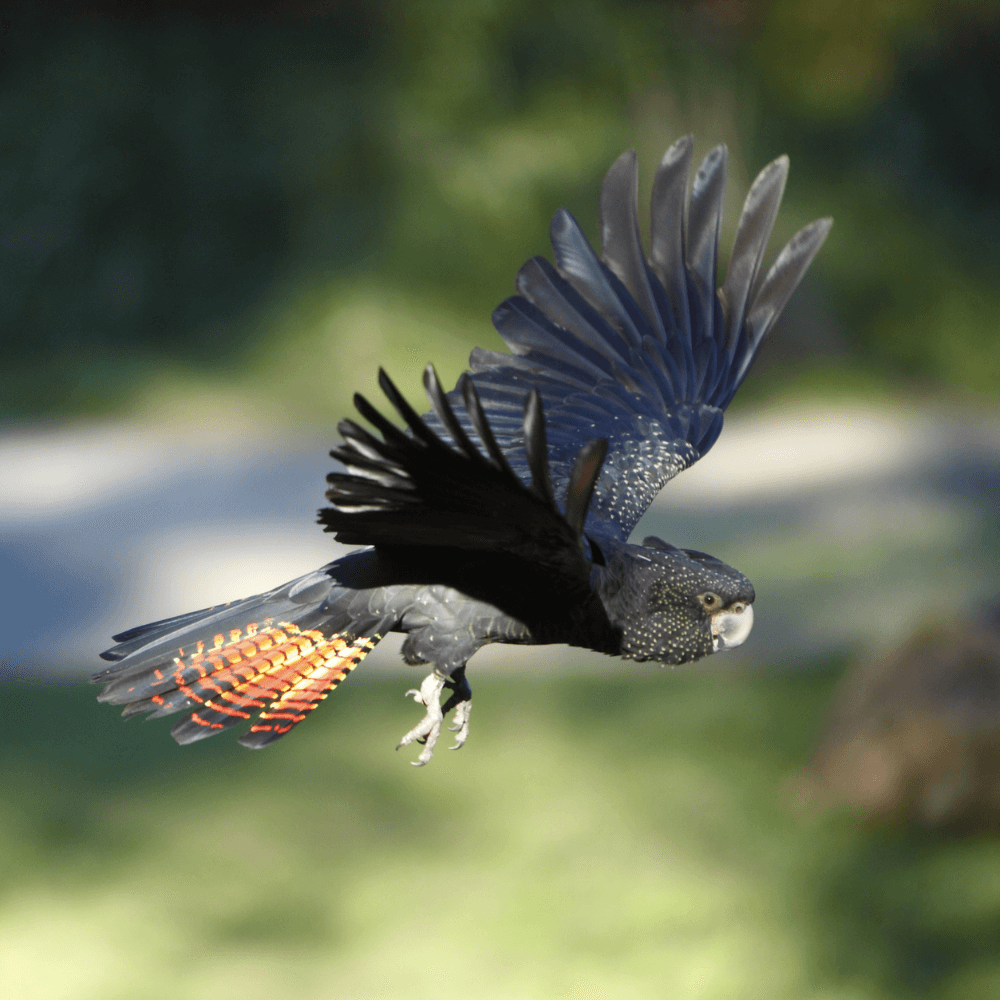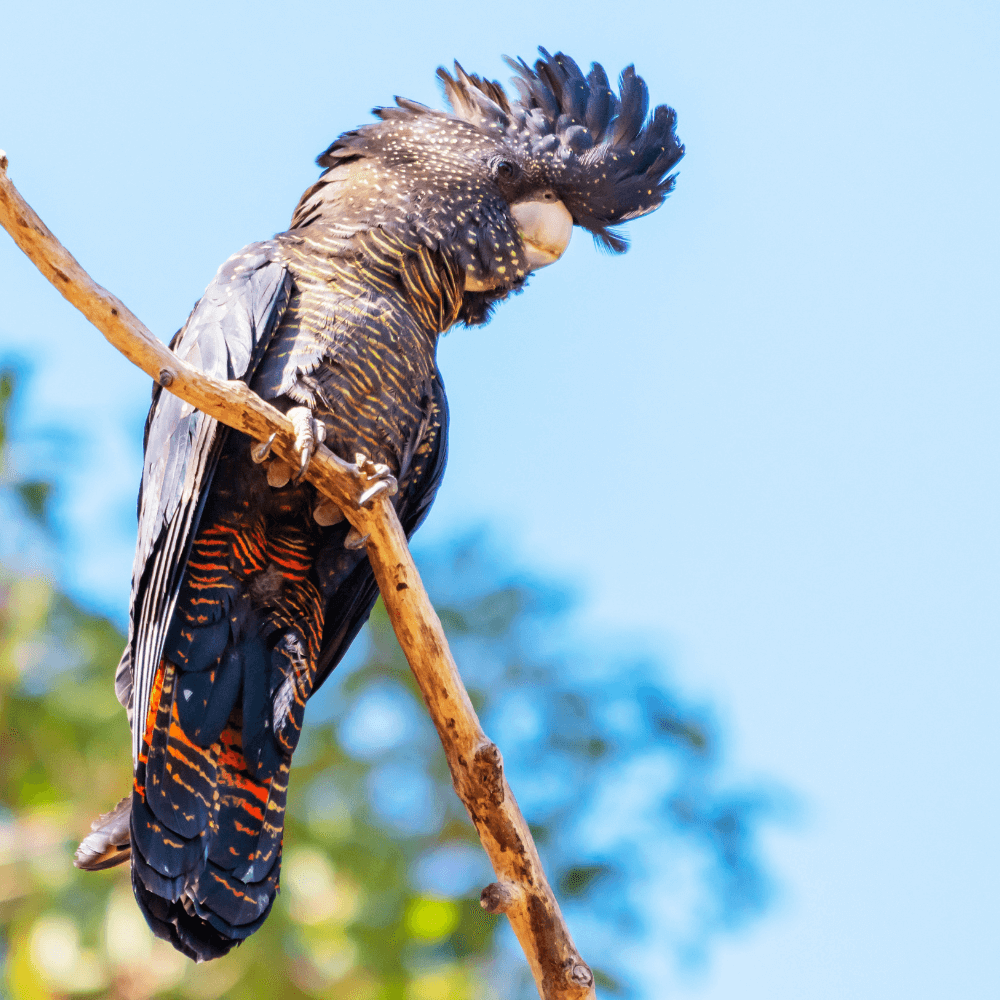Red-tailed black cockatoo: (Calyptorhynchus banksii) exhibits sexual dimorphism. The male is completely black except for the sides of the tail which are bright red in color. The upper part of the head is a long crest that starts from the front and goes to the nape of the neck. The bill is dark grey.
The females are slightly smaller. Show blackish-brown plumage with yellow-orange stripes on the tail and breast. Cheeks and wings are covered with small yellow spots. The woodpecker is pale-colored bone. The lower parts for the under-tail coverts are finely excluded in beige.
The Youth You seem to them female until they reach sexual maturity, around 4 years. Gradually, as they approach this age, YM will acquire their red feathers which gradually replace their initial feathers in yellow.
- Order: Psittaciformes
- Family: cockatoo
- Genus: Calyptorhynchus
- Scientific name: Calyptorhynchus banksii
- Citation: ( Latham, 1790)
- Protonym: Psittacus Banksii
Red-tailed black cockatoo habitat

Great variety of habitats. Grassland and scrub, from dense rainforests to acacia and eucalyptus forests.
A nest box, These birds are generally dependent on the old eucalyptus, although depending on which regions, the variety of trees for nesting, could be different.
To feed, the flocks of these cockatoos, they enter orchards and agricultural lands, becoming a veritable plague.
In all parts of the Australian continent, seasonal movements have been observed.
in the northern zone, most cockatoos flee areas with high humidity during the rainy season.
In other parts of the continent, we are seeing movements directly related to food.
In South Australia, movements are made in a south-north direction and are not necessarily tied to stations.
Red-tailed black cockatoo breeding

It makes its nest in the hollow of the following trees: MARRI, Jarrah, Wandoo, Karri Yes Bullich. The eggs are laid on the bottom of a hollow trunk, up the dry branches, between March and December. The cavity can be one or two meters deep. The diameter of the inlet can vary from 25 to 50 centimeters.
The setting is a single egg (In rare cases two). The incubation runs by the characteristics of the female and lasts between 29 y 31 days.
At hatching, the chicks are covered by sparse and yellow plumage. The surviving offspring are nursed by both parents.
Red-tailed black cockatoo food
It feeds mainly on seeds, especially those of Marri eucalyptus ( E. calophylla). Chew small branches, seize the bouquets with the legs, and “Chew” them to extract the seeds. Strip the remains on the ground, at the foot of the tree. It is a great vegetarian and also eats berries, fruits, certain insects Yes larvae. Sometimes it feeds on introduced plants or varieties such as wild radish, turnips, or melons.
Red-tailed black cockatoo Distribution

endemic to Australia, or in drier areas.
They are prevalent in the northern part of the country. In the south, they are less abundant and more scattered.
The WPT ( World Parrot Trust ) is contributing funds to a project in southern Australia to help save birds.
Are red tailed black cockatoos endangered?
It used to be common, but now it’s back rare, it’s unevenly in areas that have been drastically reduced.
The decrease is caused by deforestation, competition with nesting native and exotic species, as well as fires.
Believed that the population world is greater than 100,000 individuals. the graptogyne
subspecies was estimated at fewer than 1,000 individuals in 1989. Only the southwestern subspecies, Calyptorhynchus banksii naso, is considered “Vulnerable”.
The subspecies Calyptorhynchus banksii banksii is not listed as threatened in all regions.
Red tailed black cockatoo pet
Excellent with a very dedicated owner. Can be quite noisy. He has a moderate ability to imitate his human.
There has been an increase in captive birds in Australia. It is very rare that the birdcage.
They can live 50 to 100 years in captivity. The Calyptorhynchus banksii naso variety, 25 to 50 years old.
Related article:

